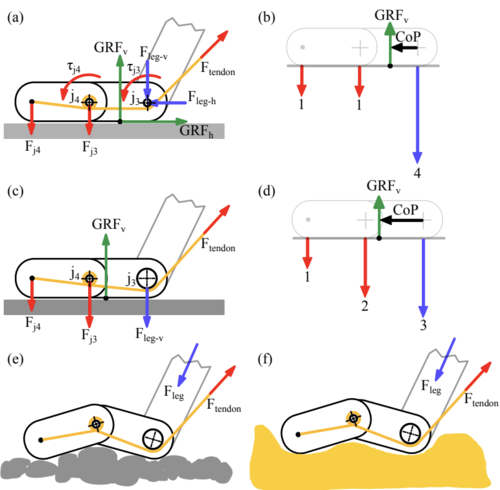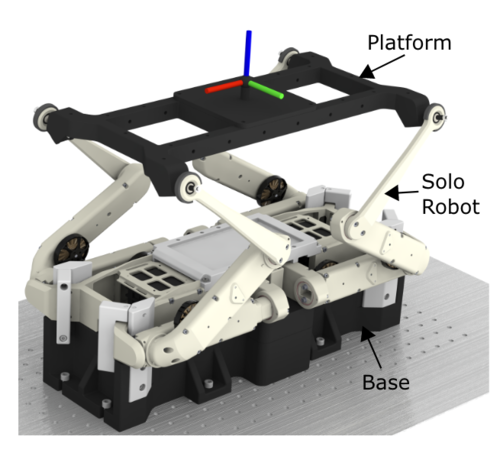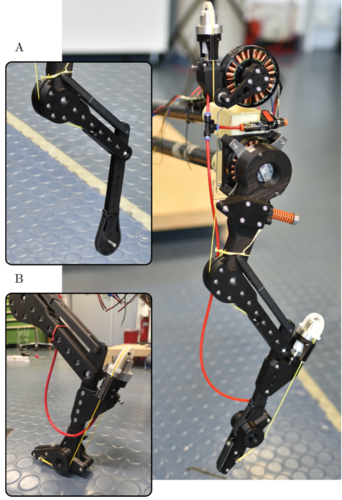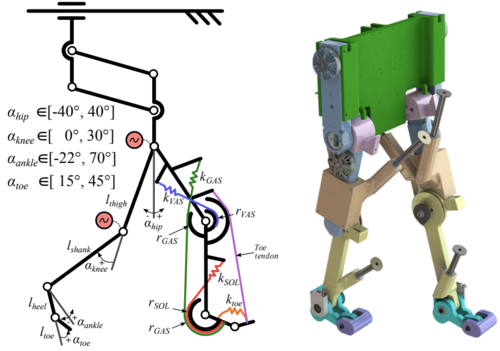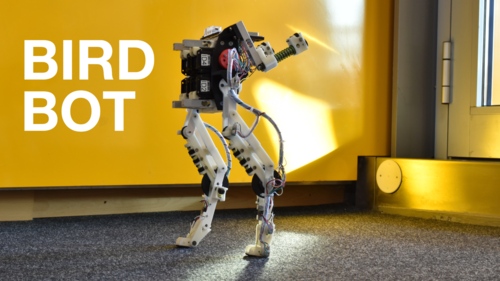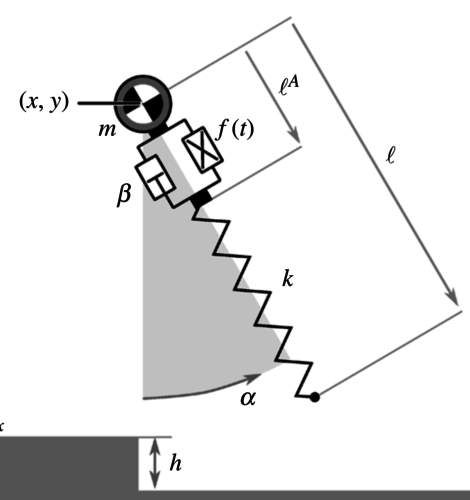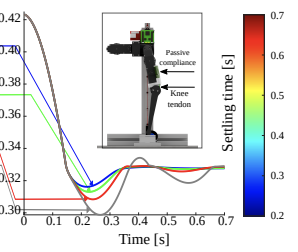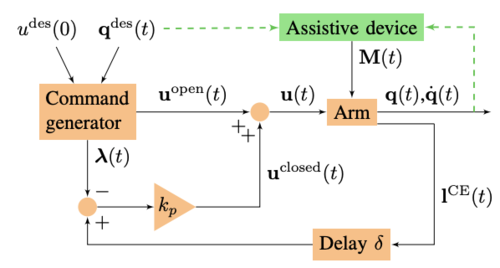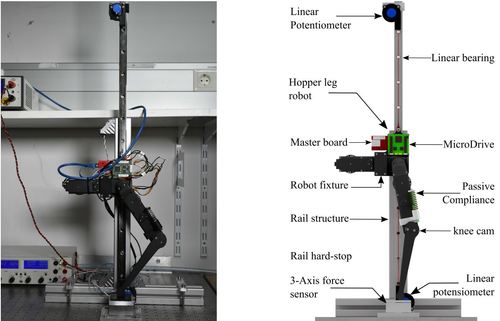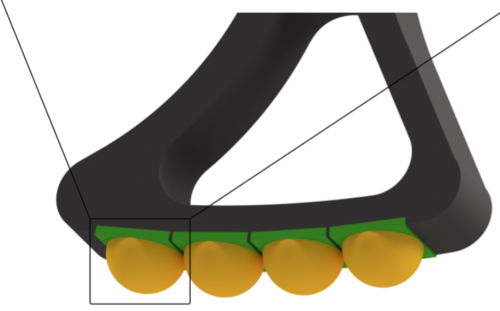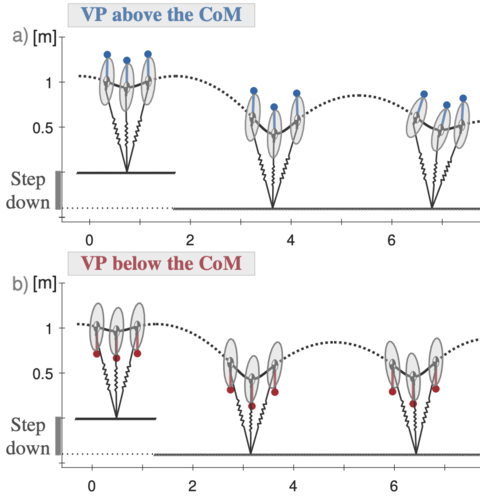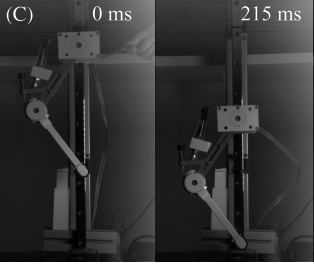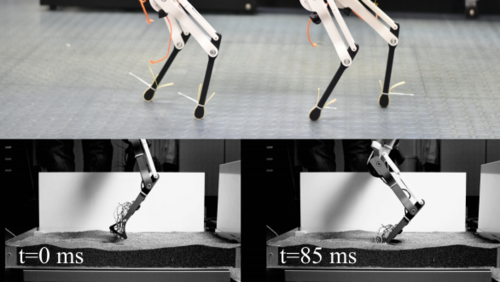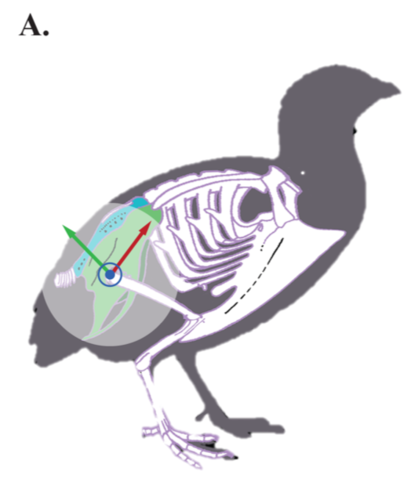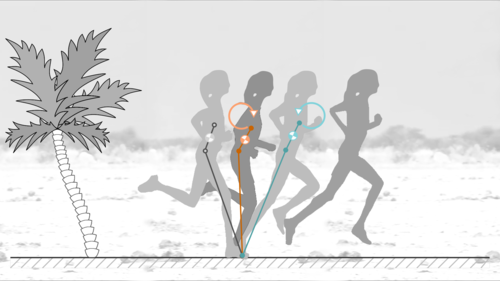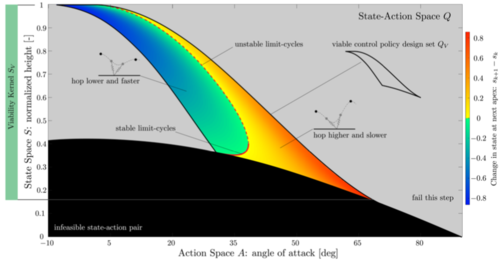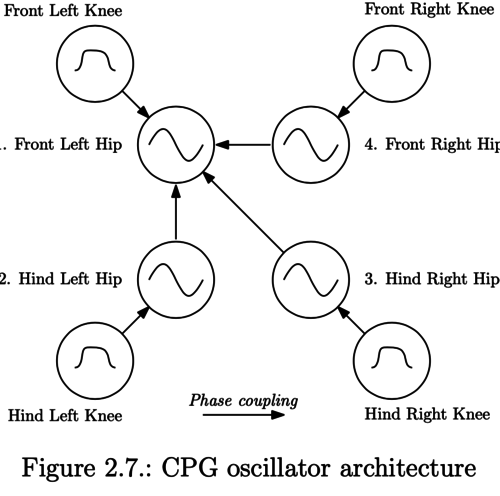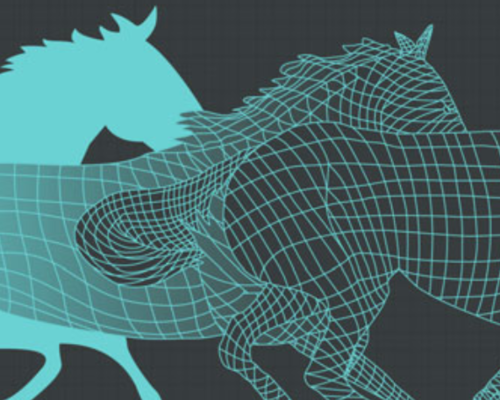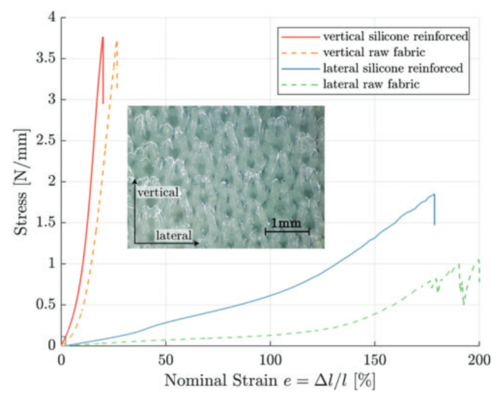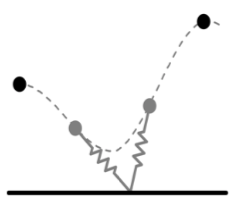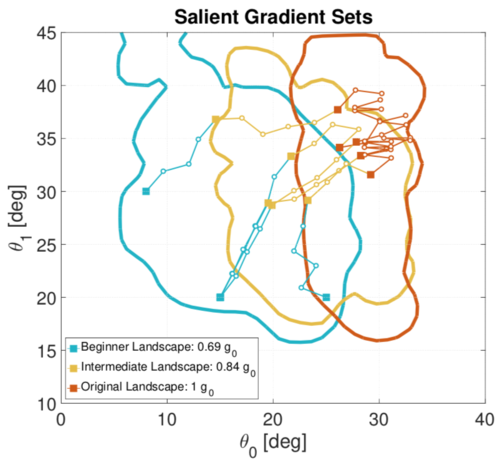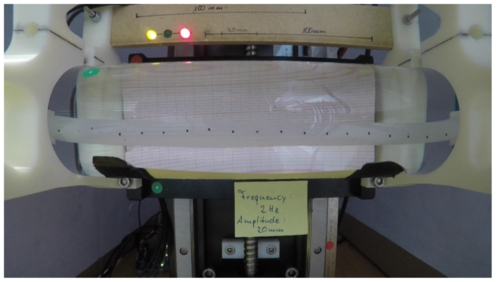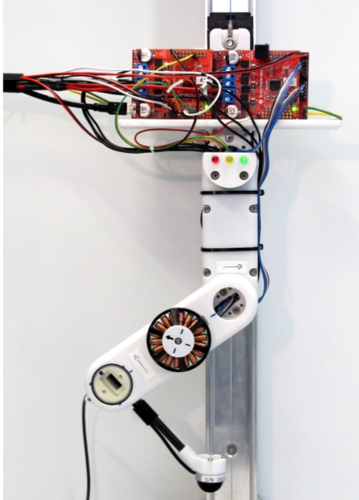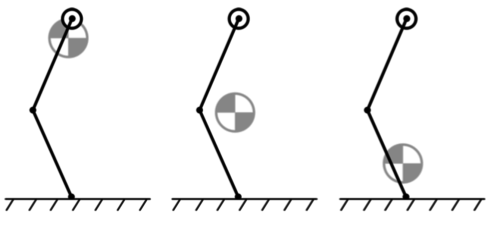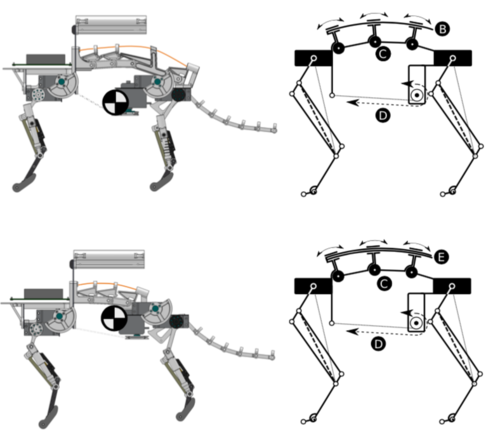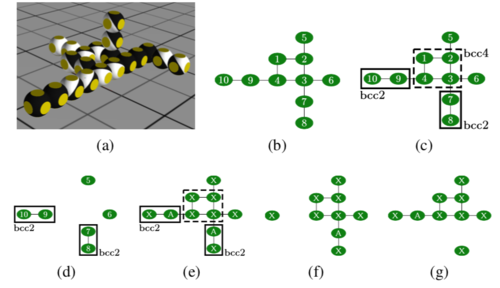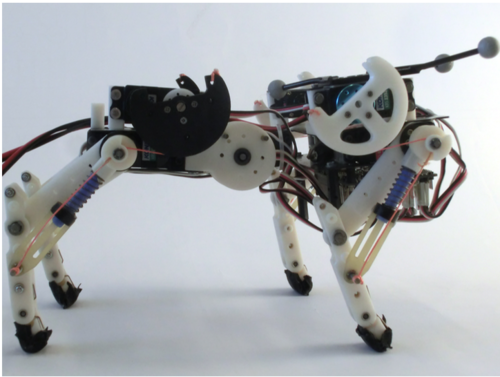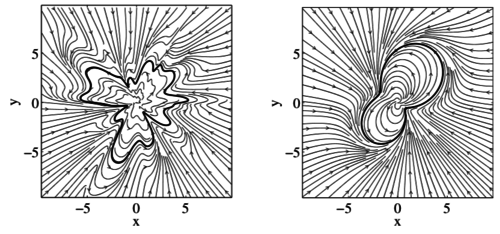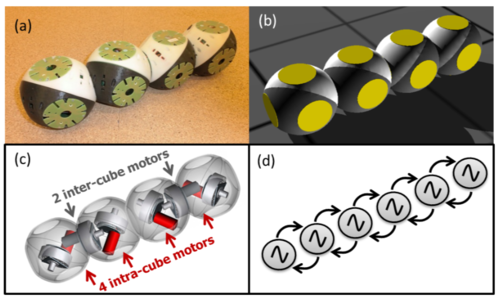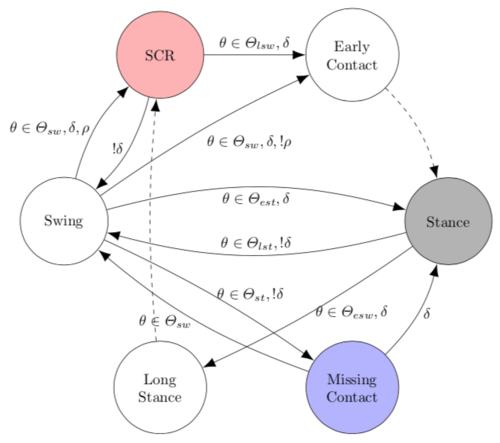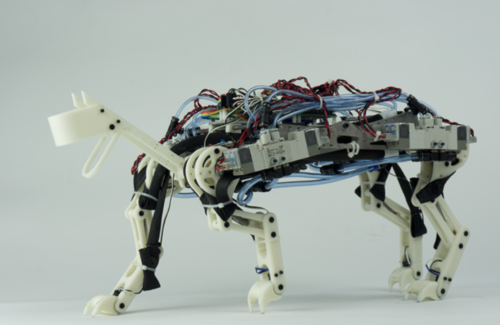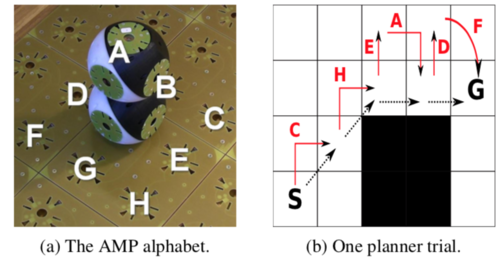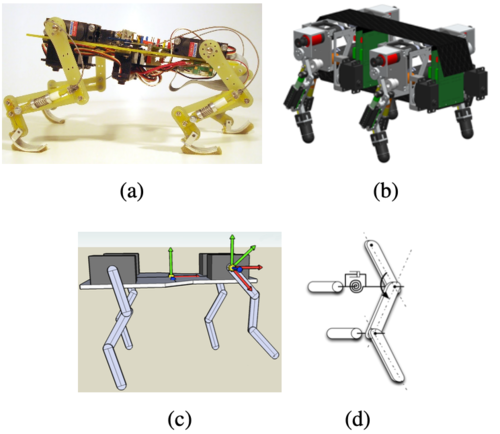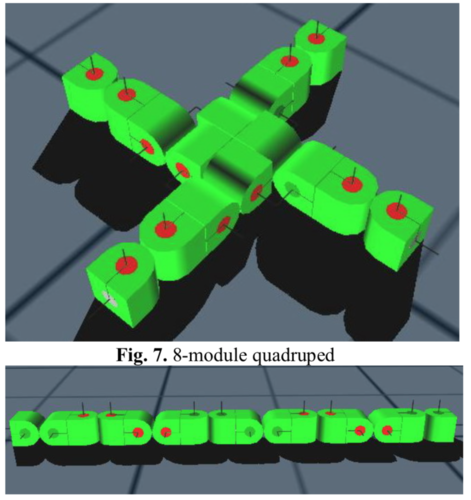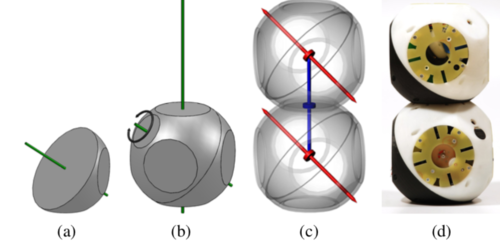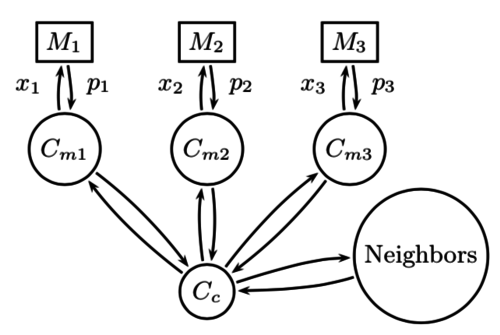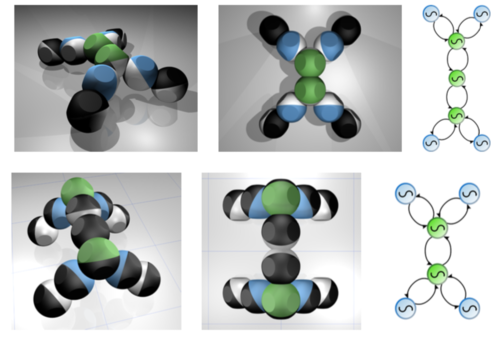2023
Multi-segmented Adaptive Feet for Versatile Legged Locomotion in Natural Terrain
(Outstanding locomotion paper award)
Chatterjee, A., Mo, A., Kiss, B., Goenen, E. C., Badri-Spröwitz, A.
2023 IEEE International Conference on Robotics and Automation (ICRA 2023), pages: 1162-1169 , IEEE, Piscataway, NJ, IEEE International Conference on Robotics and Automation (ICRA), June 2023 (conference)
An Open-Source Modular Treadmill for Dynamic Force Measurement with Load Dependant Range Adjustment
Sarvestani, A., Ruppert, F., Badri-Spröwitz, A.
2023 (unpublished) Submitted
Upside down: affordable high-performance motion platform
Pradhan, N. M. S., Frank, P., Mo, A., Badri-Spröwitz, A.
arXiv, 2023 (conference) Accepted
2022
Diaphragm Ankle Actuation for Efficient Series Elastic Legged Robot Hopping
Bolignari, M., Mo, A., Fontana, M., Badri-Spröwitz, A.
2022 IEEE/RSJ International Conference on Intelligent Robots and Systems (IROS), IEEE, IROS2022, October 2022 (conference) In press
Gastrocnemius and Power Amplifier Soleus Spring-Tendons Achieve Fast Human-like Walking in a Bipedal Robot
Kiss, B., Gonen, E. C., Mo, A., Buchmann, A., Renjewski, D., Badri-Spröwitz, A.
2022 IEEE/RSJ International Conference on Intelligent Robots and Systems (IROS), IEEE, IROS2022, October 2022 (conference) In press
Power to the springs: Passive elements are sufficient to drive push-off in human walking
Buchmann, A., Kiss, B., Badri-Spröwitz, A., Renjewski, D.
In Robotics in Natural Settings , pages: 21-32, Lecture Notes in Networks and Systems, 530, (Editors: Cascalho, José M. and Tokhi, Mohammad Osman and Silva, Manuel F. and Mendes, Armando and Goher, Khaled and Funk, Matthias), Springer, Cham, 25th International Conference on Climbing and Walking Robots and the Support Technologies for Mobile Machine (CLAWAR 2022), August 2022 (inproceedings)
Learning Plastic Matching of Robot Dynamics in Closed-Loop Central Pattern Generators: Data
Ruppert, F., Badri-Spröwitz, A.
Edmond, May 2022 (techreport)
Data for BirdBot Achieves Energy-Efficient Gait with Minimal Control Using Avian-Inspired Leg Clutching
Badri-Spröwitz, A., Sarvestani, A. A., Sitti, M., Daley, M. A.
Edmond, March 2022 (techreport)
2021
A little damping goes a long way
Heim, S., Millard, M., Mouel, C. L., Badri-Spröwitz, A.
In Integrative and Comparative Biology, 61(Supplement 1):E367-E367, Oxford University Press, Society for Integrative and Comparative Biology Annual Meeting (SICB Annual Meeting 2021) , March 2021 (inproceedings)
Effects of tendon-network mechanisms on avian terrestrial locomotion
Contreras, F. B., Daley, M., Badri-Spröwitz, A.
In Integrative and Comparative Biology, 61(Supplement 1):E89-E90, Oxford University Press, Society for Integrative and Comparative Biology Annual Meeting (SICB Annual Meeting 2021), January 2021 (inproceedings)
Developing a mechanical model for intraspinal mechanosensing in avians
Mo, A., Kamska, V., Contreras, F. B., Daley, M., Badri-Spröwitz, A.
In Integrative and Comparative Biology , 61(Supplement 1):E618-E619, Oxford University Press, Society for Integrative and Comparative Biology Annual Meeting (SICB Annual Meeting 2021), January 2021 (inproceedings)
Associating functional morphology of the lumbosacral organ and locomotion modalities in avians
Kamska, V., Contreras, F. B., Daley, M., Badri-Spröwitz, A.
In Integrative and Comparative Biology, 61(Supplement 1):E437-E437, Oxford University Press, Society for Integrative and Comparative Biology Annual Meeting (SICB Annual Meeting 2021), January 2021 (inproceedings)
Tackling sensorimotor delays and low control update frequencies during drop impacts with hybrid parallel leg compliance
Ashtiani, M. S., Sarvestani, A. A., Badri-Spröwitz, A.
The 9.5th international symposium on Adaptive Motion of Animals and Machines. Ottawa,Canada (Virtual Platform). 2021-06-22/25. Adaptive Motion of Animals and Machines Organizing Committee., pages: 3, Adaptive Motion of Animals and Machines Organizing Committee, Adaptive Motion of Animals and Machines, 2021 (conference)
2020
Simulating the response of a neuro-musculoskeletal model to assistive forces: implications for the design of wearables compensating for motor control deficits
Stollenmaier, K., Rist, I., Izzi, F., Haeufle, D. F.
In 2020 8th IEEE RAS/EMBS International Conference for Biomedical Robotics and Biomechatronics (BioRob 2020), pages: 779-784, IEEE, Piscataway, NJ, 8th IEEE RAS/EMBS International Conference for Biomedical Robotics and Biomechatronics (BioRob 2020), October 2020 (inproceedings)
Towards Hybrid Active and Passive Compliant Mechanisms in Legged Robots
Milad Shafiee Ashtiani, A. A. S., Badri-Sproewitz, A.
IEEE/RSJ International Conference on Intelligent Robots and Systems (IROS), IEEE, October 2020 (poster) Accepted
FootTile: a Rugged Foot Sensor for Force and Center of Pressure Sensing in Soft Terrain
Ruppert, F., Badri-Spröwitz, A.
In 2020 IEEE International Conference on Robotics and Automation (ICRA 2020), pages: 4810-4816, IEEE, Piscataway, NJ, IEEE International Conference on Robotics and Automation (ICRA 2020) , 2020 (inproceedings)
VP above or below? A new perspective on the story of the virtual point
Drama, Ö., Badri-Spröwitz, A.
Dynamic Walking, May 2020 (poster)
Viscous Damping in Legged Locomotion
Mo, A., Izzi, F., Haeufle, D. F. B., Badri-Spröwitz, A.
Dynamic Walking, May 2020 (poster)
How Quadrupeds Benefit from Lower Leg Passive Elasticity
Ruppert, F., Badri-Spröwitz, A.
Dynamic Walking, May 2020 (poster)
Potential for elastic soft tissue deformation and mechanosensory function within the lumbosacral spinal canal of birds
Kamska, V., Daley, M., Badri-Spröwitz, A.
Society for Integrative and Comparative Biology Annual Meeting (SICB Annual Meeting 2020), January 2020 (poster)
2019
Trunk Pitch Oscillations for Joint Load Redistribution in Humans and Humanoid Robots
Drama, Ö., Badri-Spröwitz, A.
Proceedings of 2019 IEEE-RAS 19th International Conference on Humanoid Robots, pages: 531-536, IEEE, Humanoids, October 2019 (conference)
The positive side of damping
Heim, S., Millard, M., Le Mouel, C., Sproewitz, A.
Proceedings of AMAM, The 9th International Symposium on Adaptive Motion of Animals and Machines, August 2019 (conference)
Quantifying the Robustness of Natural Dynamics: a Viability Approach
Heim, S., Sproewitz, A.
Proceedings of Dynamic Walking , Dynamic Walking , 2019 (conference)
Electronics, Software and Analysis of a Bioinspired Sensorized Quadrupedal Robot
Das Tier als Modell für Roboter, und Roboter als Modell für Tiere
Badri-Spröwitz, A.
In pages: 167-175, Springer, 2019 (incollection)
Entwicklung und Analyse neuartiger fluidischer Aktoren mit Rollmembran
Learning from Outside the Viability Kernel: Why we Should Build Robots that can Fail with Grace
Heim, S., Sproewitz, A.
Proceedings of SIMPAR 2018, pages: 55-61, IEEE, 2018 IEEE International Conference on Simulation, Modeling, and Programming for Autonomous Robots (SIMPAR), May 2018 (conference)
Shaping in Practice: Training Wheels to Learn Fast Hopping Directly in Hardware
Heim, S., Ruppert, F., Sarvestani, A., Sproewitz, A.
In Proceedings of the IEEE International Conference on Robotics and Automation (ICRA) 2018, pages: 5076-5081, IEEE, International Conference on Robotics and Automation, May 2018 (inproceedings)
Untersuchung und Charakterisierung von Teilelementen der Modifikation im Lumbosacralbereich von Vögeln
2017
Scalable Pneumatic and Tendon Driven Robotic Joint Inspired by Jumping Spiders
Sproewitz, A., Göttler, C., Sinha, A., Caer, C., Öztekin, M. U., Petersen, K., Sitti, M.
In Proceedings 2017 IEEE International Conference on Robotics and Automation (ICRA), pages: 64-70, IEEE, Piscataway, NJ, USA, IEEE International Conference on Robotics and Automation (ICRA), May 2017 (inproceedings)
Linking Mechanics and Learning
Heim, S., Grimminger, F., Drama, Ö., Spröwitz, A.
In Proceedings of Dynamic Walking 2017, 2017 (inproceedings)
Is Growing Good for Learning?
Heim, S., Spröwitz, A.
Proceedings of the 8th International Symposium on Adaptive Motion of Animals and Machines AMAM2017, 2017 (conference)
Evaluation of the passive dynamics of compliant legs with inertia
Györfi, B.
University of Applied Science Pforzheim, Germany, 2017 (mastersthesis)
2016
On designing an active tail for body-pitch control in legged robots via decoupling of control objectives
Heim, S. W., Ajallooeian, M., Eckert, P., Vespignani, M., Ijspeert, A.
In ASSISTIVE ROBOTICS: Proceedings of the 18th International Conference on CLAWAR 2015, pages: 256-264, 2016 (inproceedings)
2015
Comparing the effect of different spine and leg designs for a small bounding quadruped robot
Eckert, P., Spröwitz, A., Witte, H., Ijspeert, A. J.
In Proceedings of ICRA, pages: 3128-3133, Seattle, Washington, USA, 2015 (inproceedings)
2014
Automatic Generation of Reduced CPG Control Networks for Locomotion of Arbitrary Modular Robot Structures
Bonardi, S., Vespignani, M., Möckel, R., Van den Kieboom, J., Pouya, S., Spröwitz, A., Ijspeert, A.
In Proceedings of Robotics: Science and Systems, University of California, Barkeley, 2014 (inproceedings)
2013
Benefits of an active spine supported bounding locomotion with a small compliant quadruped robot
Khoramshahi, M., Spröwitz, A., Tuleu, A., Ahmadabadi, M. N., Ijspeert, A. J.
In Robotics and Automation (ICRA), 2013 IEEE International Conference on, pages: 3329-3334, May 2013 (inproceedings)
Central pattern generators augmented with virtual model control for quadruped rough terrain locomotion
Ajallooeian, M., Pouya, S., Spröwitz, A., Ijspeert, A. J.
In Proceedings of the 2013 IEEE International Conference on Robotics and Automation (ICRA), pages: 3321-3328, IEEE, Karlsruhe, 2013 (inproceedings)
Motor Control Adaptation to Changes in Robot Body Dynamics for a Compliant Quadruped Robot
Pouya, S., Eckert, P., Spröwitz, A., Moc̈kel, R., Ijspeert, A. J.
In Biomimetic and Biohybrid Systems, 8064, pages: 434-437, Lecture Notes in Computer Science, Springer, Heidelberg, 2013 (incollection)
Gait Optimization for Roombots Modular Robots - Matching Simulation and Reality
Möckel, R., Yura, N. P., The Nguyen, A., Vespignani, M., Bonardi, S., Pouya, S., Spröwitz, A., van den Kieboom, J., Wilhelm, F., Ijspeert, A. J.
In Proceedings of the 2013 IEEE/RSJ International Conference on Intelligent Robots and Systems, pages: 3265-3272, IEEE, Tokyo, 2013 (inproceedings)
Modular Control of Limit Cycle Locomotion over Unperceived Rough Terrain
Ajallooeian, M., Gay, S., Tuleu, A., Spröwitz, A., Ijspeert, A. J.
In Proceedings of the IEEE/RSJ International Conference on Intelligent Robots and Systems, 2013, pages: 3390-3397, Tokyo, 2013 (inproceedings)
2012
Development of a Minimalistic Pneumatic Quadruped Robot for Fast Locomotion
Narioka, K., Rosendo, A., Spröwitz, A., Hosoda, K.
In Proceedings of the 2012 IEEE International Conference on Robotics and Biomimetics (ROBIO), 2012, pages: 307-311, IEEE, Guangzhou, 2012 (inproceedings)
Locomotion through Reconfiguration based on Motor Primitives for Roombots Self-Reconfigurable Modular Robots
Bonardi, S., Moeckel, R., Spröwitz, A., Vespignani, M., Ijspeert, A. J.
In Robotics; Proceedings of ROBOTIK 2012; 7th German Conference on, pages: 1-6, 2012 (inproceedings)
2011
Oncilla Robot—A Light-weight Bio-inspired Quadruped Robot for Fast Locomotion in Rough Terrain
Spröwitz, A., Kuechler, L., Tuleu, A., Ajallooeian, M., D’Haene, M., Moeckel, R., Ijspeert, A. J.
Symposium on adaptive motion of animals and machines (AMAM 2011), January 2011 (conference)
2010
Graph signature for self-reconfiguration planning of modules with symmetry
Asadpour, M., Ashtiani, M. H. Z., Spröwitz, A., Ijspeert, A. J.
In Proceedings of the 2009 IEEE/RSJ International Conference on Intelligent Robots and Systems, pages: 5295-5300, IEEE, St. Louis, MO, 2010 (inproceedings)
Roombots - Towards decentralized reconfiguration with self-reconfiguring modular robotic metamodules
Spröwitz, A., Laprade, P., Bonardi, S., Mayer, M., Moeckel, R., Mudry, P., Ijspeert, A. J.
In Proceedings of the 2010 IEEE/RSJ International Conference on Intelligent Robots and Systems (IROS), pages: 1126-1132, IEEE, Taipeh, 2010 (inproceedings)
Distributed Online Learning of Central Pattern Generators in Modular Robots
Christensen, D. J., Spröwitz, A., Ijspeert, A. J.
In From Animals to Animats 11, 6226, pages: 402-412, Lecture Notes in Computer Science, Springer, Berlin, 2010, author: Doncieux, Stéphan (incollection)
Automatic Gait Generation in Modular Robots: to Oscillate or to Rotate? that is the question
Pouya, S., van den Kieboom, J., Spröwitz, A., Ijspeert, A. J.
In Proceedings of the 2010 IEEE/RSJ International Conference on Intelligent Robots and Systems (IROS), pages: 514-520, IEEE, Taipei, 2010 (inproceedings)

